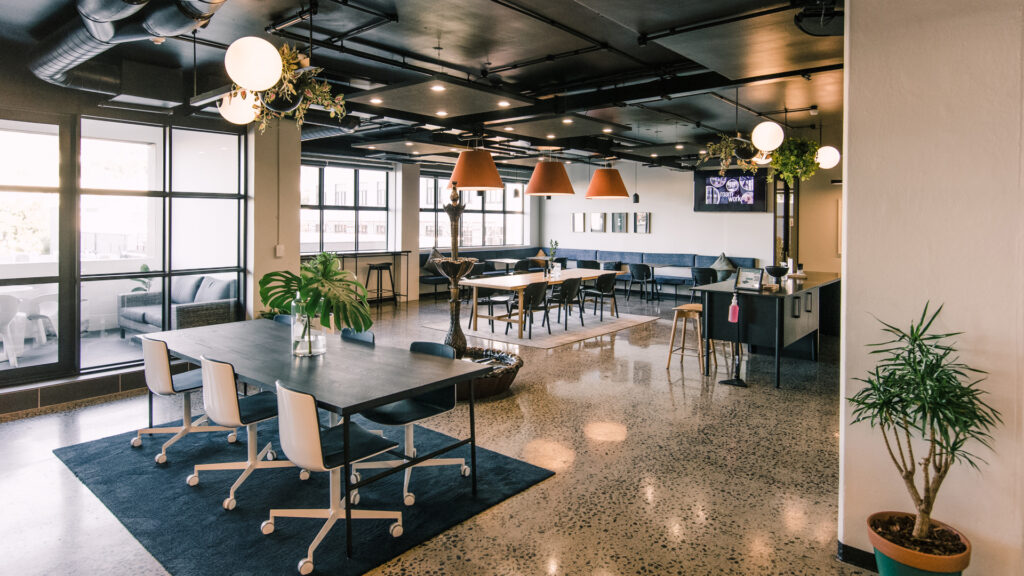Adapted from our recent feature in The Inclusive Coworker:
Read the original article, posted by Lucy McInally on The Inclusive Coworker
With a career spanning over two decades in commercial property management, Darren Epstein has a unique combination of technical expertise, entrepreneurial spirit, and a passion for building community-driven workspaces. Originally trained as a mechanical engineer, Darren’s transition into property began in the early 2000s, when he joined a fast-growing commercial property management business.
Over the years, Darren has managed a portfolio of offices, retail spaces, and a hotel, gaining hands-on experience in hospitality. But by 2018, he was ready for a new challenge. As the coworking movement began to gain traction globally, Darren saw an opportunity to fuse his interests in technology, design, and service into a more human-centric office model. This led to the founding of Roamwork, located in Cape Town’s up-and-coming East City Precinct.
What started as a single floor in a refurbished building has since grown into a 4,500-square-metre hub, delivering high-quality private offices and tailored services. In this interview, Darren shares the lessons learned as the coworking space scales up and how his team perfected the art of hospitality.
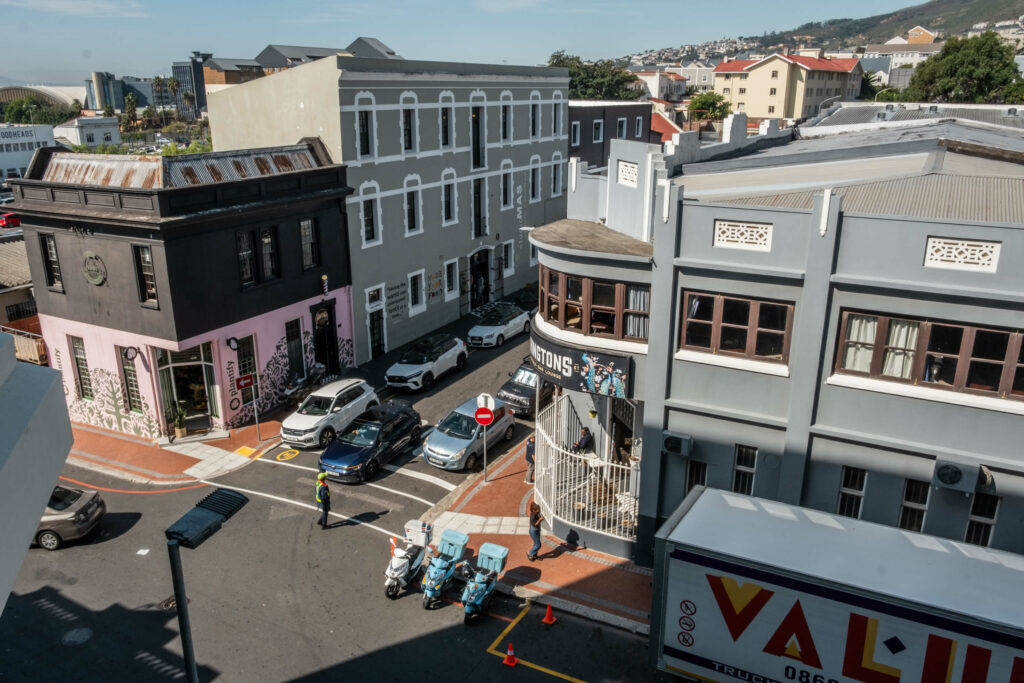
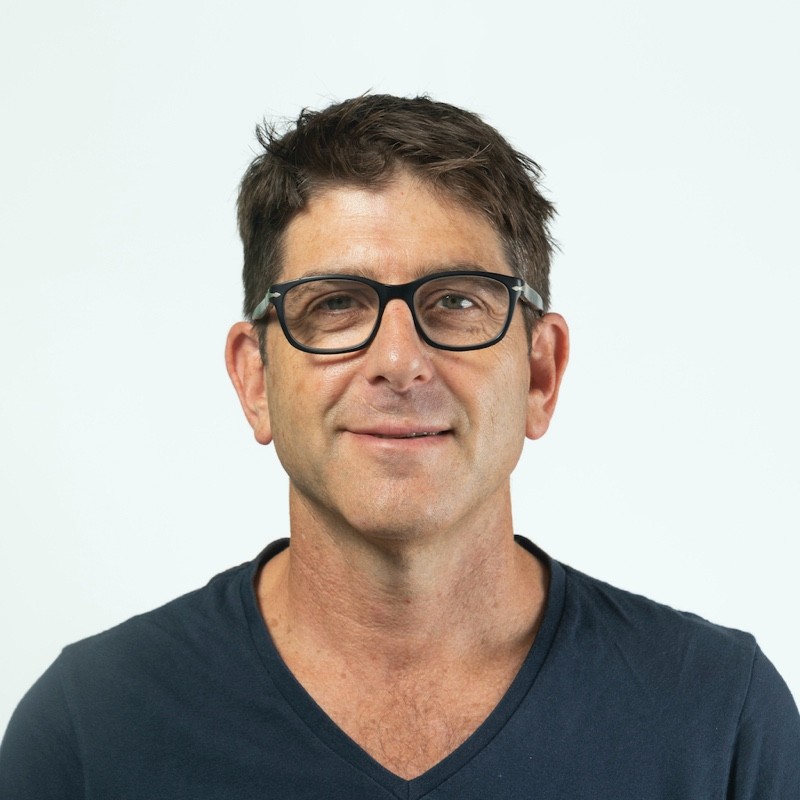
1. What inspired the founding of Roamwork, and how has the space evolved since opening?
Darren: Providing services and hospitality to people getting on with their business was something I wanted to do while working in commercial property back in the early 2000s. The problem was that it required onsite management, and we couldn’t justify the resources at that stage.
In 2018, I was looking for something new. The property management company I worked with bought this building on Harrington Street and redeveloped it, gutting the floors and creating five stories of offices and parking while retaining the envelope of the building.
We took a lease for a 2,200-square-metre space on the second floor and created a flexible workspace that was predominantly private offices. We installed SALTO Systems and looked at our tech right from the start.
Shared workspaces weren’t a big thing in South Africa back then, although WeWork was the big driver in marketing coworking internationally. People think coworking is just about hot desks and a big open space, so we have to educate them that it’s more than that. You can have a private office and all these services are covered – furniture, meeting rooms, wifi, cleaning & tea and coffee. That’s always been our challenge.
We opened in December 2018, originally, under a management agreement with another coworking brand. But when COVID hit, the space wasn’t financially sustainable under that model. After taking over in August 2020 and rebranding as Roamwork, we took a hands-on approach and gradually filled the space. By 2022, demand had grown so much that we started turning people away. By that point, people understood the benefits of taking smaller offices over working from home. In 2023, the landlord assigned the fourth floor to us. We now have 4,500 square meters in this building, after changing the layout and adding a 100-square-metre event space. We employed an event manager who works with our community manager. In a coworking space, you need an event space for your members, and used by people outside. The event space is a good addition to the offering, but we still have a lot of opportunities to grow and host more events.
2. The design of Roamwork is striking and thoughtfully curated. What was the vision behind the workspace aesthetic, and how did you bring that to life?
Darren: The building lent itself to an industrial feel – steel and concrete, with exposed services and soffits. The shopfronts were specifically designed for us to create a slim steel finish, utilising aluminium shopfronts.
However, the downside of the industrial look created a few problems. Acoustics, for instance, is a massive bugbear of mine. I can hear a slight echo, and I want to fix it. But we’ve worked on that sort of thing as we’ve gone along, like putting carpets into the fourth-floor offices.
When we started, we densified the space with offices. But, it’s a deep building – we initially battled to rent out the central core offices, lacking natural light. These were only filled once all the window offices were occupied. When we designed the fourth floor, we left the central core open-plan to provide more hot desking and breakout space. The challenge is now to fill this space and make it profitable. Earlier this year, it became useful as we accommodated a national client on short notice who was in between office moves and needed to house 100 employees for a few months. It worked out so well, they didn’t want to leave when their new offices were ready!
Throughout our space, we have hot-desking seating that grows and contracts depending on the time of year. Besides our monthly hot desking plans, we offer Bulk Day Passes of 5, 10, 15, and 20-day passes, valid for three months, and can be shared with friends and partners. During the spring and summer months, we get many digital nomads who travel to Cape Town during the Northern winters. These offerings are ideal for their needs, giving them the flexibility to work and travel while in the city.
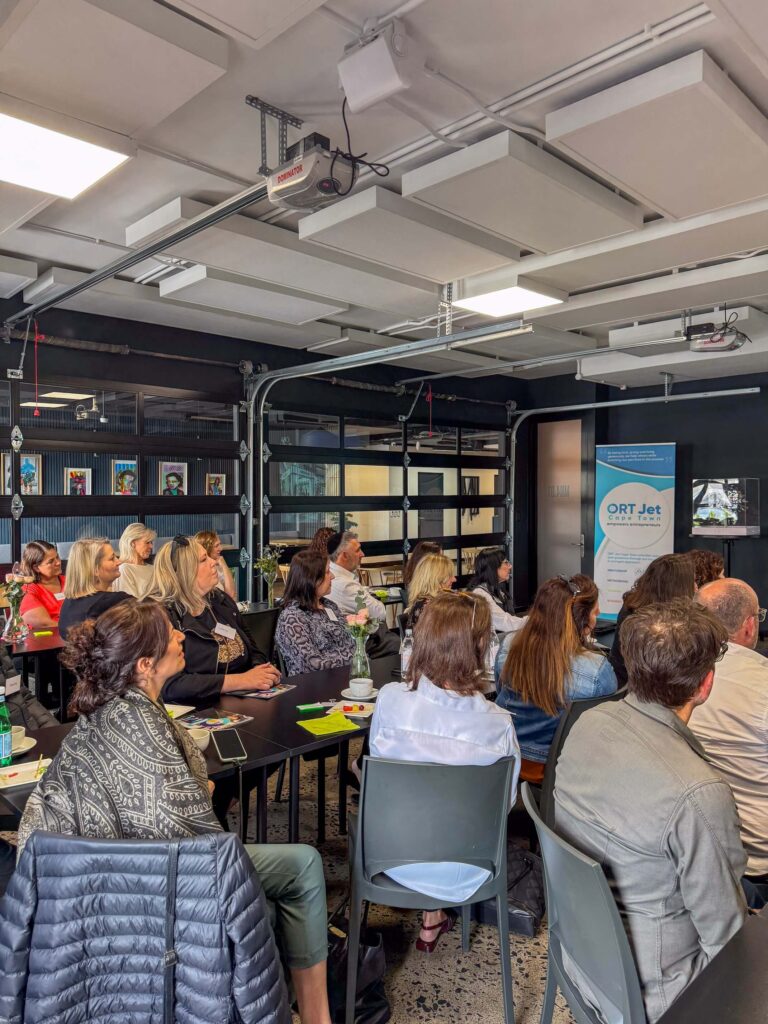
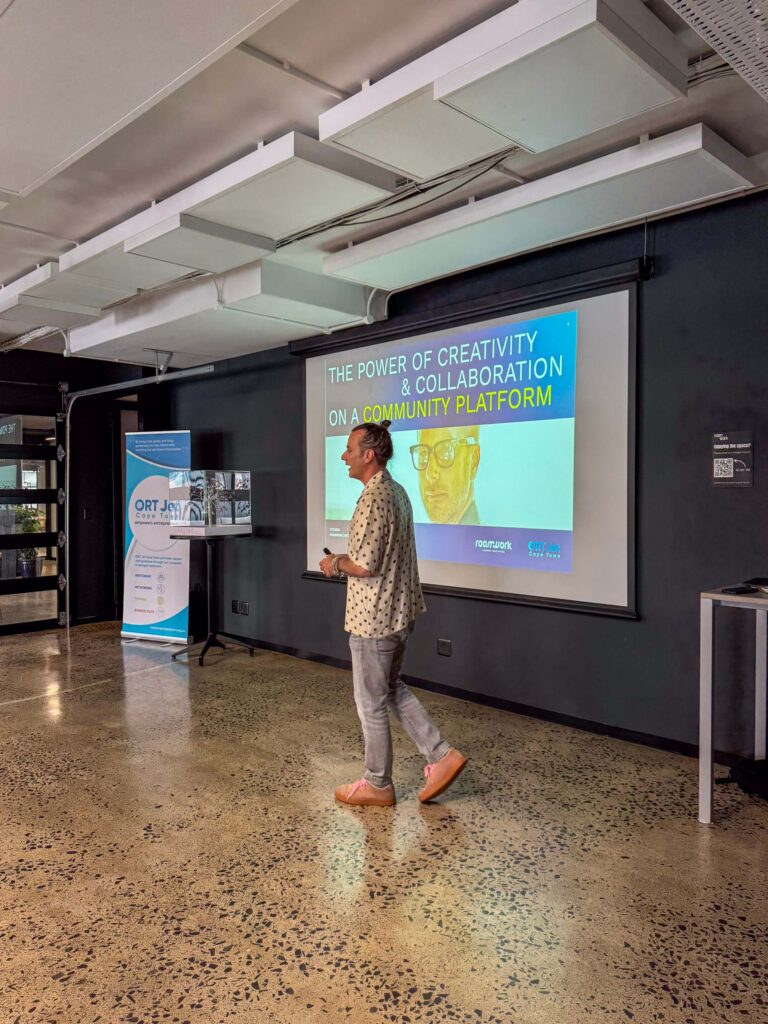
Our benchmark for offices is 80% occupancy. We have the full range from one-seaters right up to a 40-seater. We’ve spread out hot desks and dedicated desks, but found that many people eventually migrate to an office.
The landlord wanted to reactivate the building lobby, so they also gave it to us. There’s a Bootlegger coffee shop in the lobby, a popular local brand operating two satellite cafes on each floor, providing coffee and food for our members and visitors. Besides the hot desking space in the lobby, we also added two meeting rooms, forming part of our offering.
We’re located on the fringe of the City Bowl (the suburban area where people live), so we’re appealing to people who want to use meeting rooms or get out of the house for work. There are a few things we’re working on here.
3. What benefits does integrating the in-house art gallery and other services bring to your community?
Darren: We provide offices, but we like to ask: “What else do people want?” For example, we built a studio complete with an infinity curve in our workspace, and collaborated with one of our members who runs a creative agency. By doing this, we hoped to offer something different and useful for our members, while expanding our reach to external users.
It was a fantastic idea, but it didn’t work for several reasons – it was too expensive for people to shoot there, and there were acoustic challenges. This year, we turned it into an office for one of our members whose business has grown. This turned out to be a better use of the space.
We also built one of our rooms on the fourth floor as a podcast studio, providing acoustic treatment within. We intended to offer the full service – studio, equipment production, but in the end, we felt that most people would bring their own. The room is ultimately multipurpose and is occasionally used as a podcast studio, but mostly as a meeting room.
The lesson is: investing and providing unique and specialised services doesn’t always work out. The best option is sticking to our core of ‘offering space’ and aligned services.
The art at Roamwork is more than just a backdrop – it’s a defining feature of the space. Some pieces form part of a private collection, while others have been curated through Art Gazette, an initiative that connects contemporary artists with global workspaces. The result is a bold and eclectic mix, with a strong leaning toward abstract works. Visitors often pause to take it in. It’s one of those unexpected elements that make the space feel alive and deeply considered.
During my attendance at Coworking Europe 2023 in Porto, I toured a workspace with great furniture, but I immediately noticed these white walls, and felt that something was missing. We’re fortunate to have our art collection, and it makes a huge difference to people’s environments.
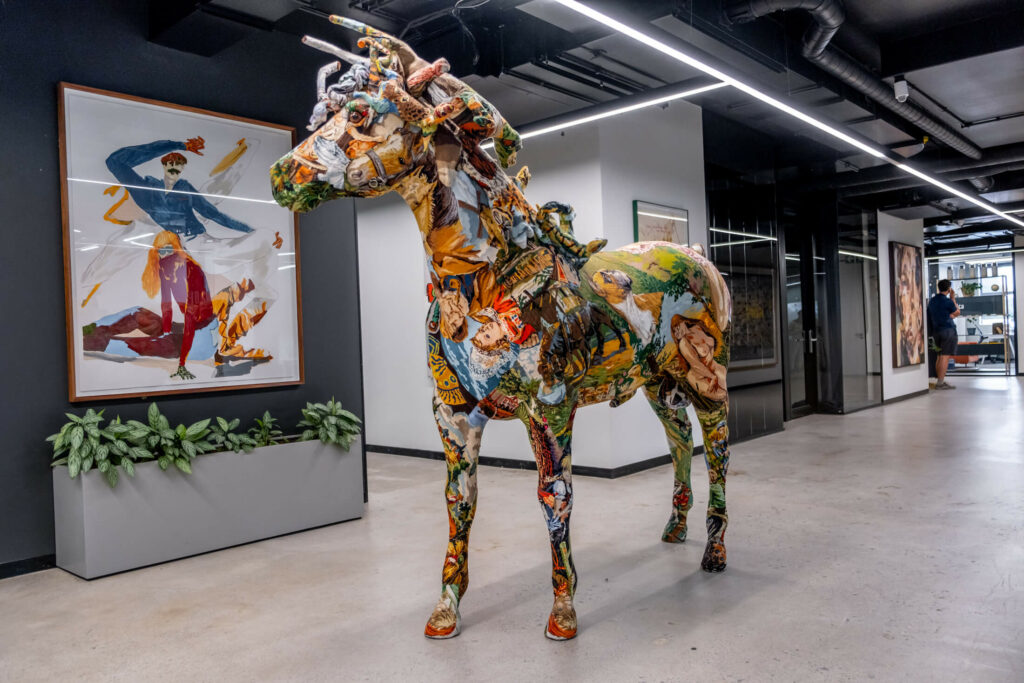
4. It sounds like community is at the heart of Roamwork. How do you support your members and help them build meaningful connections?
Darren: I sometimes feel that we don’t hold enough community events, but members seem to connect naturally within the workspace, while getting a coffee at the cafe, or preparing lunch in the canteen. Members come from a broad spectrum of businesses and creative talent. I believe this diversity is the catalyst for people to feel comfortable connecting.
Saying that, having a broad community has been key to our success. I don’t believe in having a specialised offering. We have finance people, engineers, interior designers, architects, and digital media people.
I’m driven by the ability to connect people. Social media is brand building, but Google is where the leads come in, and word of mouth. People who visit for a meeting are intrigued by the environment and always ask to tour the space. At some point, these interactions convert visitors to members.
As coworking professionals, it’s important to know more about your members’ expertise and their businesses. This helps the team connect people within the space, especially new members.
We intentionally gave our IT support contractor an office so they can be ‘on call’ to deal with any IT issues. By being here, they’ve managed to secure new clients, helping their business grow.
A friend of mine with a successful online electrical supply company moved to Cape Town from Durban, taking up a hot desk and eventually an office. In no time, he was connecting with other members, some of whom are interior designers and architects, which helped him build a presence in Cape Town. Over time, he’s grown a team of electricians and opened a retail outlet shop in the city. Cape Town is a difficult place to break into, but he was very open to meeting people and connecting within the space.
This is one of several stories where a member’s success ultimately loses members for the business. But it’s extremely satisfying to know that Roamwork played a role in their success – others will follow!
Here in Cape Town, many international companies are opening offices and making use of the local talent. For instance, a US company in the legal field joined us last year with a 25-seater office. They’re growing and have just moved to a 40-seater office. They mostly work on USA time zones, and some of them work until midnight, but we’re open 24 hours. They could go and find their own office, but they don’t want that; they want our services and support.
A UK media company has just taken the 25-seater space that the lawyers moved from. We’re also getting another office ready for a UK marketing company. We anticipate them growing, so my concern is that we run out of space for those teams, but we’ll look at the options when the time comes.
We pride ourselves on creating flexible options for clients; a finance company just joined us on a mixed membership package – an 8-seater office with dedicated desking in the open plan area. They also purchase Day Pass Packages for their hybrid employees, which not only offers flexibility, but also allows them to keep their costs down.
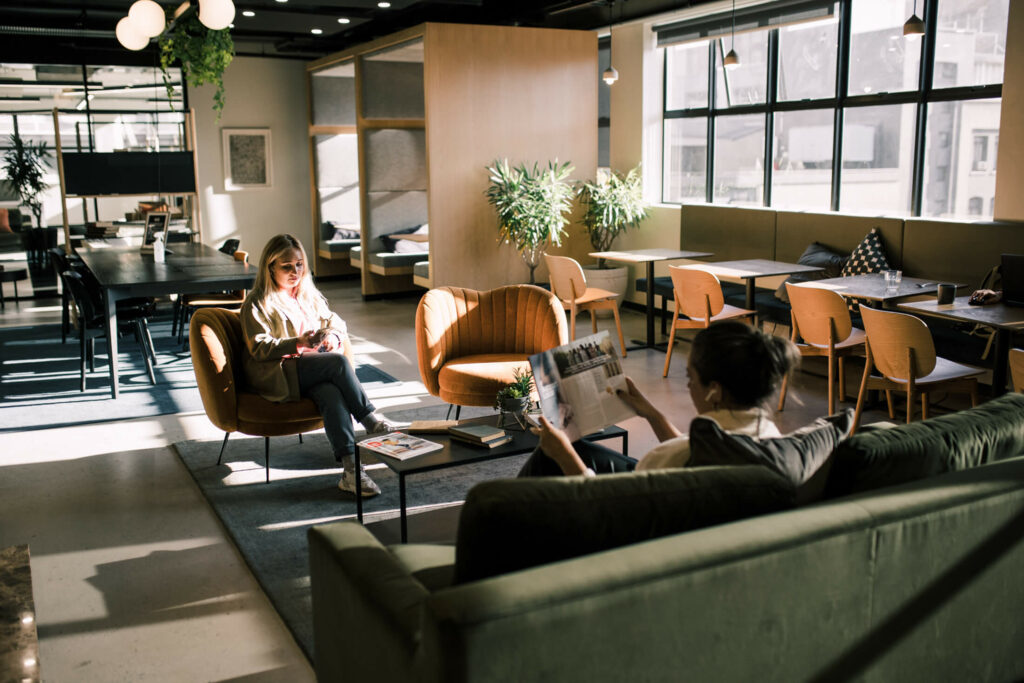
5. Roamwork is located in one of Cape Town’s most vibrant neighbourhoods. What role does Roamwork play in the area’s continued growth?
Darren: Roamwork is located in the East City Precinct, on the fringe of Cape Town’s CBD, a hub where people have been returning to since the early 2010s. There are art galleries, restaurants, and it’s become quite a buzz. This neighbourhood has grown – there are lots of food offerings for our members. Some short-stay aparthotels have been built around here in the last year, with plans for new restaurants and other retail within the node.
We are quite excited to be redoing our original second-floor reception area, which has always been our main barista cafe where the team welcomes members and guests to the space. We plan to create a new coffee bar and seating with a member’s soft seating lounge. The coffee shop is a meeting point where people connect while waiting for their coffee, and is surrounded by general activity at the front desk.
We don’t get many people leaving us, but if they do, it’s generally because they’re leaving town or their business is changing.
Our great team is vested in our members’ and guests’ well-being. I heard about Will Guidara, and the one story that stuck with me was the one about the New York hot dogs. I shared that concept when one of my team members’ guests broke her shoe’s heel. We didn’t have any glue, so I asked my hostess to buy some from the shop around the corner. It was a small gesture that didn’t cost much, but our guest will remember it for a long time.
We have a small team who have mostly been with us from the start. They all know what is expected of them and continuously go the extra mile to make members and visitors feel at home.


